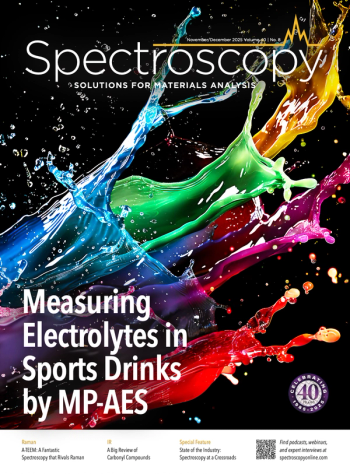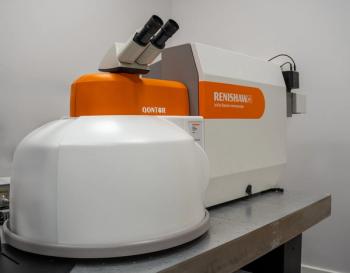
Upcoming Eastern Analytical Symposium Integrates Art and Science
The 2014 Eastern Analytical Symposium and Exposition (EAS), taking place November 17?19 in Somerset, New Jersey, promises attendees a comprehensive program of educational and networking opportunities for analytical scientists.
The 2014 Eastern Analytical Symposium and Exposition (EAS), taking place November 17–19 in Somerset, New Jersey, promises attendees a comprehensive program of educational and networking opportunities for analytical scientists. In advance of the event, LCGC spoke to EAS President Ann Aubry, and EAS Program Chair Andrew V. Teplyakov about what attendees can expect this year.
What is the significance of this year’s theme, “The Art and Science of Analysis”?
Aubry: The theme was inspired by a hallway discussion with a colleague who challenged me on the idea that chromatography may be more art than science. I disagreed vehemently at the time, but it made me think about the part of art in science in general, and instrumental analysis in particular. If art represents the know-how that allows analytical scientists to get the most of the instrumentation available to them, the science would be explaining experimental observations, developing new models or theories, and inventing new applications. The art and science of analysis is also about knowing what technique to use in solving a particular problem and how to combine techniques in new ways to achieve the desired result.
The theme is also a nod to the conservation science program at EAS. We have been fortunate to host the annual conference on art conservation for the last 20 years. The program is developed in collaboration with the New York Conservation Foundation, joined in 2014 by the American Microchemical Society, and it brings together an energetic, creative, and technically up-to-date community of researchers, most of them working in museums, libraries, and other cultural heritage institutions. I don’t know of another general analytical conference with as many art- and heritage-related sessions. Their research is the epitome of art and science.
The program at EAS is designed to bring about both the science and the art. We want attendees of technical sessions to leave with practical solutions they can implement in their own lab. Our short courses complement the program. Taught by experts, they provide in-depth training that is immediately applicable. Having a large exhibit also allows us to combine the technical aspects and the scientific applications in one conference.
What are the “conferences in miniature”?
Aubry: With more than 60 oral and poster sessions, it can be difficult for attendees to find the presentations they really need to attend. Because our audience comes from various fields and industries, it is difficult to create parallel tracks the way many other conferences do. Instead, we organize the program into mini-symposia around a particular theme or technique. We try to make sure that all attendess have at least one full day of programming of interest to them. The art conservation program that we discussed earlier is a good example of a conference in miniature; so is surface science, which has been featured at EAS since 2007. Of course, attendees are free to attend a symposium that is not in their own field. This is the best part of attending an event like EAS: the ability to learn from other fields.
What else is new or exciting about this year’s event?
Aubry: There were several changes introduced last year that we intend to continue. We organized a plenary session on Monday night, which, for the first time in many years, brought together, in the same room, all EAS attendees and contributors. The other change was in the exhibition floor, which was redesigned to facilitate interactions between vendors and users and to bring more attention to poster presentations. For 2014, we have a new and improved registration system that we hope will help attendees plan their visit more efficiently. Finally, the free development workshops are centered around employment with presentations on social media, resume writing and presentation skills. There will be one on each day of the symposium.
What is new in the spectroscopy programming for this year's EAS conference? Why did you feel it was important to address the topics in those sessions?
Teplyakov: There are always a number of general topics that come up every year, but every year with novel, cutting-edge ideas, methods, and approaches. Also, every year this selection is, to some extent, affected by the specifics of awards, one of the trademarks of EAS. For example, the EAS award in Mass Spectroscopy this year has a fundamental interest in industrial and biological applications of this technique. Similarly, the EAS award in near-infrared (NIR) spectroscopy brings up extended interest in pharmaceutical and biopharmaceutical applications of NIR. With intense focus of nanoparticles and nanomaterials, this year there will be several sessions on spectroscopy of materials based on nanostructures and nanoparticles. Forensic applications have become a major player in EAS interests and this year the dedicated session will focus on combining chemometrics and spectroscopy for forensic analysis and for detecting counterfeit pharmaceuticals. NMR spectroscopy has grown into a full three-day set of talks with two different award sessions that attract a high-profile audience not only from the Northeast, but from all over the world. All of these developments are triggered by the most recent breakthrough in science and technology, and also by the most recent demands imposed by political and economic changes.
Are there also favorite topics returning to the program this year?
Teplyakov: A number of topics keep coming up every year, but this recurrence does not mean that the state of the arts in the corresponding fields is the same. It is indeed because of their continuous development that these themes keep bringing back new and interested audiences. Among the general topics, in addition to the ones mentioned above, the novel developments in spectroscopy and microscopy of surfaces, forensic microscopy, and microspectroscopy and imaging are returning. We also always highlight the interface of analytical science with education, and this year the corresponding session will be dedicated to integrating analytical chemistry research into curriculum.
Newsletter
Get essential updates on the latest spectroscopy technologies, regulatory standards, and best practices—subscribe today to Spectroscopy.



